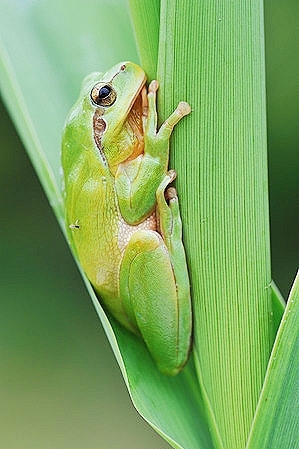|
| Query: Frog | Result: 898th of 2273 | |
Stripeless tree frog (Hyla meridionalis)
| Subject: | Stripeless tree frog (Hyla meridionalis)
| | Poster: | Shahril (different_world_06@hotmail.com)
| |

| Resolution: 299x449
File Size: 107166 Bytes
Date: 2023:09:14 08:21:47
Upload Date: 2023:09:14 17:25:48
|
ERROR : Server Busy(-1105)
ERROR : Server Busy(-1105)
Stripeless tree frog (Hyla meridionalis)
The stripeless tree frog of Europe has sticky pads on its fingers and toes, enabling it to climb smooth surfaces. |
^o^
Animal Pictures Archive for smart phones
^o^
|
|

